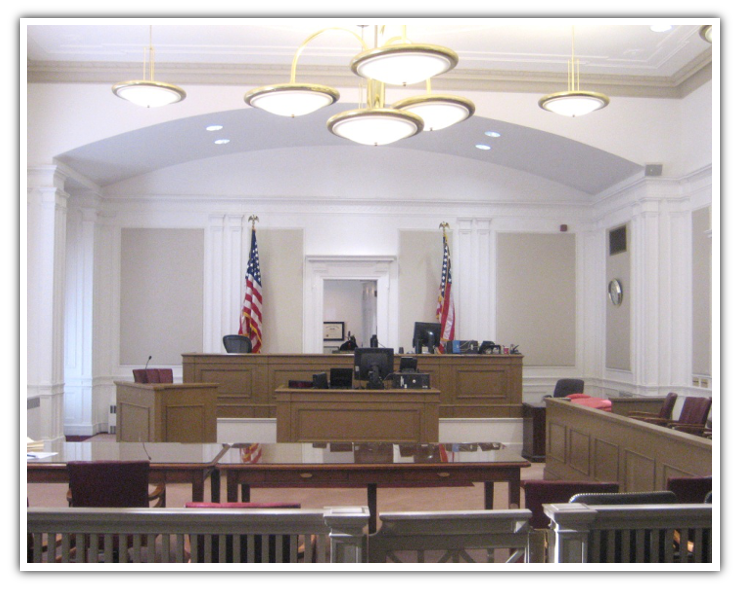Planning, funding, designing, and constructing a significant renovation project to an existing courthouse or the construction of a new courthouse is lengthy and can take ten years or more. A courthouse plan, or needs assessment, is the first step in the process and includes assessing the court's current and future space needs, identifying space projects to address those needs, and determining the best course of action for the court to pursue in meeting its space needs.
I have covered numerous aspects of courthouse planning from a qualitative perspective in past blogs. In my most recent series of blogs, I have addressed courthouse planning from a quantitative perspective. In the following series, I will roll both the qualitative and quantitative considerations into a framework for a comprehensive courthouse planning process.
Let’s begin with an overview description of this process.
4 Main Steps of Courthouse Planning
There are four basic components of the courthouse planning process that I have used and have continued to refine since we were established in 1988.
Step 1. Assessment of the court’s current and projected operational needs.
This step involves establishing courthouse demand by examining regional demographic and economic data, court workload, and the court components’ collective observations regarding current and future operational requirements.
Step 2. Assessment of how the court’s current facilities can meet the current and projected operational needs.
This step focuses on obtaining a quantifiable assessment of the courthouse facility as described in Courthouse Metrics: An Introduction.
Step 3. Development of a program of requirements (POR) to establish the specific facility components required to meet the current and projected operational needs.
This step itemizes and quantifies the court facility spaces, both existing and future, that will be required to meet the identified demand.
Step 4. Development of alternative facility solutions and selection of an execution strategy.
This final step uses courthouse metrics described in Courthouse Metrics: Closing the Gap to create a master plan for future court facilities responsive to the court’s space needs within an economical and time-sensitive context.
Following these steps, we created a dynamic courthouse planning process that has catalyzed constructing of over 70 new courthouses and over 200 major renovation projects.
Perhaps one of my favorite examples of courthouse planning commenced under rocky circumstances. Our team arrived at a court to begin planning with the various court components in that jurisdiction. We were met by an anxious court manager who informed us of a problem. During our hiring process, the court's chief judge changed, and the new chief judge did not think the process was necessary.
The court manager took us to meet with the new chief judge so that we could explain the purpose of the plan. After introductions, the judge said, “I don’t know why you are here, but you have 30 minutes to complete your work and leave my courthouse.” This was very stressful because we had scheduled meetings with all the court components over the next day and a half. We decided to start the process and do our best with the time the judge would allow.
The chief judge sat in on the kick-off session, where we reviewed the trends impacting the court. The court components had a great dialogue regarding trends rippling through the court and impacting the workload and resources. The 30-minute deadline came and went as the planning process started to reveal the real need that the court had for space projects to improve its operations. In the end, the judge cleared his calendar and participated in all of the meetings for the next day and a half. By giving the process a chance, he saw the benefit of courthouse planning and how it can assist a court in defining and justifying the need for space projects.
It has been years since we conducted that planning process. Today, the court resides in a new courthouse with modern security and proper functionality for the court family. The workload and personnel for the court have increased over time, but due to the planning process, the courthouse comfortably houses the increase.
Another judge is now at the court and uses a courtroom initially built out as office space but had the dimensions and height to be converted to a courtroom when needed. Through a minor renovation project, this new courtroom connects to tight corridors so prisoners can be securely moved from a prisoner elevator to a courtroom holding cell without crossing paths with the public or court personnel.
I could go on with more examples about how the new courthouse is meeting the needs of all the court components. However, the point I would like to emphasize is the importance of the courthouse planning process in determining the needs of the court and justifying the space necessary to meet those needs. A good courthouse planning process serves as a catalyst for the funding, design, and construction of future court needs – whether those needs are to maximize the space in an existing facility or to construct a new courthouse.
Following this introductory post, the upcoming series of articles will address the various individual efforts included in the four steps of the court planning process.


















